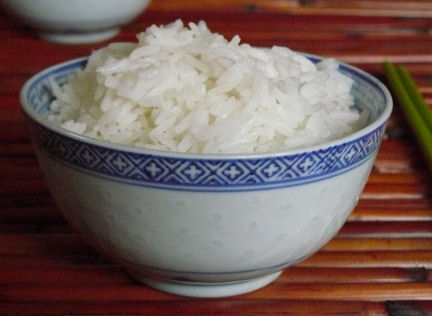
Whether you cook long-grain rice in an electric rice cooker or a saucepan, practice and consistency are the keys to doing it well. The following tips will put you on the path to cooking a good pot of rice every time.
What is perfect rice?
That’s something to be debated. I like my grains to retain their individuality but not be dry. The cooked rice should be soft but not mushy. It should taste clean and sweet and have a wonderful fragrance. Rice is a wonderful canvas upon which you can put other textures and flavors. It should be great on its own (I sprinkle a little fish sauce on plain rice on many occasions!) but also be ready to play nice with other dishes.
You may enjoy rice that’s more stick-to-your-ribs, and you can achieve that by cooking a medium grain rice, such as what’s enjoyed in Japan and Korea. If a dry rice is preferred, basmati may be your ticket. For Vietnamese and other kinds of Southeast Asian and East Asian cuisines, basmati is a little too dry for most uses. However, I’ve found that it is quite nice for fried rice!
My everyday rice is Thai jasmine long grain rice. Currently, I buy Phoenix brand at the Chinese market. For information on shopping for long-grain rice, visit the the Basic Vietnamese Kitchen page.
The pan for making rice
If you elect to cook rice on the stove top, choose a heavy-bottomed saucepan with a tight-fitting lid. Since rice more than triples in volume during cooking, the amount of raw rice should fill no more than one-fourth of the pan. For example, use a 1½- or 2-quart pan for 11/2 cups of rice, and a 2- or 3-quart pan for 2 cups of rice.
Amount of rice to cook
One (1) cup raw rice yields 3 ½ cups cooked rice, or enough for 3 light eaters. To be sure you have enough rice, prepare 1 ½ cups raw rice for 3 or 4 people and 2 cups raw rice for 4 to 6 people.
Time required to cook a pot of rice?
Plan on 30 minutes from the moment you turn on the heat to when the rice is cooked. For that reason, I start my pot of rice first before preparing other dishes for our everyday meals. Rice will keep warm for about 30 minutes so if it takes roughly 1 hour to make dinner, you'll be set.
For a dinner party, I start the rice right before or soon after guests arrive so that it can cook while we're sipping wine or cocktails and nibbling on snacks. You can keep a pot of cooked rice warm in a low (250F) oven too after it's done cooking.
How to wash rice
Whether you are rinsing the rice in a pan, a rice cooker insert, or a
bowl, use plenty of water and always start by stirring the rice in
circles with your fingers or by rubbing it gently between your palms to
loosen the starches.
Don't expect the water to get clear. It NEVER does. It starts out opaque and cloudy
and becomes less murky. Aim to repeatedly rinse the rice with fresh
water until the water is nearly clear. The photo above is the water from my last rinsing. It is not clear. If you use a precise
water-to-rice ratio, drain the rice in a sieve before putting it in the
pan.
How to cook rice in a pot:
Rice is typically cooked by first boiling with the pan uncovered, and then lowering the heat, covering the pan, and simmering. During the initial boiling, I employ the northern Viet technique of stirring the rice several times to ensure even cooking. To cook a pot of rice:
1. Bring the rice and water to a boil (or near boil) over medium-high or high heat. Tips on how much water to use are in "Myths and Truths about Cooking Rice."
2. Give the rice a stir with chopsticks to loosen the grains sticking to the bottom.
3. Lower the heat to medium so the rice simmers vigorously. Cook the rice, stirring 2 or 3 times, for a few minutes, or until most of the water appears to have been absorbed and the surface looks glossy and thick. You may also see small craters in the surface.
4. Decrease the heat to low, cover, and cook for 10 minutes.
5. Turn off the heat and let the rice sit for 10 minutes to firm up and finish cooking.
6. Uncover, fluff with chopsticks or a fork, and then re-cover and wait for 5 minutes before serving. The rice will stay warm for 30 minutes. Right before serving, fluff the rice again as it may have settled a bit!













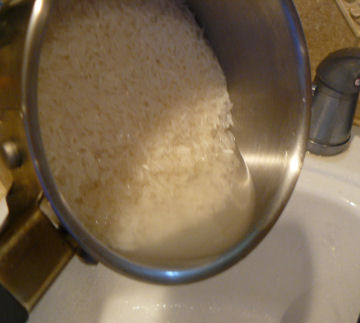
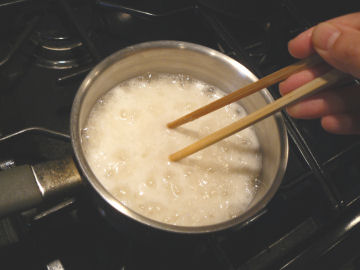
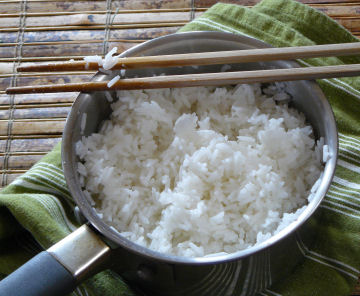



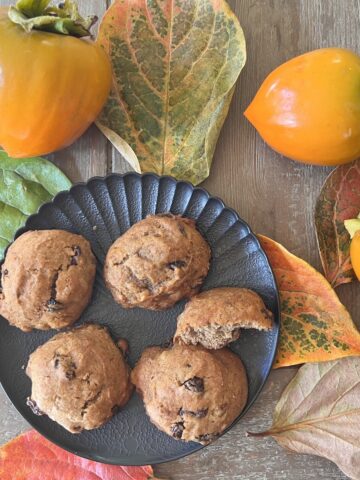
Rosa says
I cook my rice without a rice cooker and it is always perfect! Thanks for the useful tips.
Cheers,
Rosa
Adam says
Thanks for the informative instructions! I'm curious, if you ever cook "broken" jasmine rice, do you use the same cooking method?
Andrea Nguyen says
Hi Adam, Yep, I use the same method for broken rice (com tam). That rice can be a bit drier than fresh crop jasmine. If it's too al dente, I sprinkle in some water and put the lid back on. It's like Vietnamese rice couscous, don't you think?
Tangled Noodle says
I switched from an electric cooker to stovetop when I realized the appliance was so big for only 1 cup of raw rice. I've finally learned the variation in amount of water and timing between basmati and jasmine, the two rice(s) I make most often. I recently saw a Japanese ceramic rice cooker that looked so pretty as well as being practical; right now, I use a Le Creuset pot.
Julia says
thanks for the useful tips. As we don't own a rice cooker, this is perfect for us.
rephael says
I was a terrible cooker!
But after i have read some books i learned how to cook,
What are the mistakes i was making And how not to burn things down 🙂
I started reading this book about two weeks ago, ive done almost everything in the book since my family is just graving for more.....
You should try it too! Here's a link: http://2353dcm9fb8afw31qft99men8g.hop.clickbank.net/
Good luck and Happy cooking!
Regards,
Reno Web Design says
Never used a rice cooker, this is perfect. Thanks for the tips. I primarily cook Jasmine, but I'll be trying others now.
Christi says
Hi Andrea! I have been going through the posts on your blog tonight and am excited to try your recipes. Anyway- I use a rice cooker, but my mom taught me how to to figure out how much water to use by putting my middle finger on the top of the rice and filling up the water to the first crease on the inside of my finger. It works beautifully, but of course I have to adjust it a little with each new bag of rice.
Thanh Viet says
Hi, I'm ok to cook rice and sticky rice since I'm 8 (I'm half vietnamese and my mom always teached me). But lately I wanted to cook black sticky rice... and Damn it ! This one doesn't cook like the others !!! After 2 turns in the ricecooker, it was still crunchy ! Any idea ???
Andrea Nguyen says
Thanh Viet -- soak the black sticky rice and then you have to steam it (no rice cooker!) for a long time. It doesn't really ever become sticky like xoi. It's more like brown rice.
Thanh Viet says
Ok, Cam On Co Andrea 😉 I'll try that.
Thanh Viet says
Ok, so I tried yesterday. The rice soaked for hours before I put it in the steamer. I tried to cook regular sticky rice this week with our electric steamer to check time. As the steamer has 2 baskets, I cooked Gao Nep on left, and Gao Nep Den on right. White cooked for 50 minutes, and black for 70 minutes, but it was well done. It stays a bit crunchy compared to the white, but it was cooked inside, and you still feel a bit of the shell. But with coconut milk "a la Pim" it was delicious !
Andrea Nguyen says
Thanh Viet -- Congratulations! I had some black sticky rice yesterday and it just stays kinds firm because of the bran.
Do you stir the rice while it cooks? That helps to circulate the heat.
raji says
hi, i am also using the same procedure.it's good.
red rice cooker2
C. Carlton says
I usually cook for one, so small portions are the norm. I've used rice cookers for years and even had a very small one, byt it finally died. Back to the basic lidded-pot method!
1. I always wash my rice, similar to your instructions, usually three thorough rinses, until the water is almost clear.
2. I always use the same pot and always the same measured amount of dry rice.
3. When time permits, I soak the washed rice in the cooking water for up to one hour. Nice, but not essential.
4. Water volume is always a guess and varies from type to type and the shelf age of the rice. For long-grain rices, it is usually about 1.5 cups to 1.75 cups. If one cooks enough rice, you just get a feel for how much is necessary. Cooking lots of rice and screwing it up a few times is the way to learn!
5. I bring the pot to a gentle boil and cook, uncovered until MOST of the water on top is gone, the reduce heat to low (very low?) and cover, continuing for 10-12 minutes.
6. When the time has expired, I remove the pot from the heat and let it rest, unopened for at least 10 and usually 15 minutes, then stir lightly and enjoy.
7. Despite the ocassional pot mess, I find that the best textured rice includes a thin layer of dry, overcooked grain on the bottom. So what? I little soaking and it is gone. That slighly dry stuff stuck to the bottom seems to be the hallmark of good rice.
8. Tastes and types vary. I often use other types of rice as well. While the technique is about the same, the water volume and cooking times can be very different.
9. If there are any real secrets for cooking GOOD Rice in an ordinary pan, they begin with practice and consistency. If a batch is not good, toss it and start over! Even good quality rice is dirt cheap!
Ivenesting a little time in Good Rice is worth the effort!
Andrea Nguyen says
C. Carlton: Thanks for the personal tips! Greatly appreciate them.
Gwen says
I have been cooking rice for over 25 years. Taught by the Vietnamese. I use the finger method for measuring the amount of water. Where I differ in your instructions is. I put the rice on the stove covered with a lid - bring it to a boil, turn it to low and let it cook for 15 minutes. NEVER STIR it at all. Rice is perfectly cooked.
Supra Skytop says
the wolf has a winning game.
Supra TK Society says
Patience and application will carry us through.
gggirlgeek says
Gwen has it right. The methods in this article break almost every rule I've learned about good rice. I grew up half Filipino so I've been cooking rice a long time. I'm picky about the taste - a little firm, and a little sticky.
My tricks are to use the cheapest generic rice I can find for starters. This is what the restaurants use and is probably the biggest factor that changed my rice quality. Stay far away from Uncle Ben's. If you like it then none of the instructions on this page are for you.
Generally 2 to 1 water ratio for stove-top rice, 1.5 for Jasmine, 1.5 for broken rice. Less for rice-cookers. I don't wash fortified American rice, I wash imported rice once, but then add less water -- a tablespoon or two. Basically, wash for drier rice, don't wash for stickier rice. You can use short-grain rice to make sticky rice too. I love this kind.
Cooking time: after boiling, I time it for exactly 10 minutes for regular rice, 15 for jasmine or broken -- and never remove the lid or stir. The only exception is if I don't have a heavy bottomed pan I stir once before simmering to unstick the grains from the bottom, then I replace the lid and don't remove it after the burner is nice and cool. I cook it at a low (3 out of 10) setting to avoid the bottom burning.
After the time is up I take it off the burner WITHOUT LIFTING THE LID and let it finish cooking for 5 minutes. So the real total cooking time is increased 5 minutes to equal what's in the directions -- 15 for regular rice, 20 for Jasmine. Last, I let it sit uncovered for 5 minutes, and maybe fluff it with a fork if I want a looser, less sticky texture.
Stirring the rice during cooking makes it pasty. Lifting the lid makes it lose flavor and increases cooking time because steam is hotter than water. It also makes it less fluffy. If you like Uncle Ben's then add more water and stir your rice a lot. You will need butter and salt to cover up the taste. 🙂 Over-cooking the rice for more than 20 minutes makes it mushy -- but you can correct this by taking the lid off immediately after removing it from the burner and fluffing it.
I love the taste of rice-cookers but they take way too long. The only real advantage is that they often have a warm setting so you can leave your rice in it for a day or two -- no kidding -- without re-steaming the leftovers. If I do put rice in the fridge I just sprinkle a paper towel with water and cover it, then microwave it for 3 minutes and let it sit in there untouched for 2 or 3 minutes. It re-steams nicely this way. You can use a steamer basket on the stove-top too.
Justin Bieber Shoes says
Thank you for your thoughtful comments. Keep them coming!That said, just as the strongest startups today are managing to get.I will try to play as soon as I get home from work. I'm not a pastel kind of person, so this will be a fun challenge.
The last thing the Banks need at the moment is to be holding the Title on property that no one wants and in most cases can't afford.
Michelle Vuong says
Here is my weir way of measuring how much water i should put in my rice pot. Perfect every time!!! After I washed the rice, pour some water in the pot with clean rice in it, I level the surface of the rice with the pot on the counter, next I gently put my hand flat on the rice and when the water reaches to about 1 and 1/2 to two inches above my metacarpophalangeal joints (exclude the thumb and little finger joints) then it is ready to cook.
It is weird but it works every time.
MIchelle
lacleMelp says
eAp pittsburgh steelers jerseys oOm http://www.mypypeline.com/event/description/mple%5FA03D4A0EFA1550A0
Beats by Dre says
Do not to others what you do not wish them to do to you.
marlon says
The methods in this article break almost every rule I've learned about good rice.
Eve says
THANK YOU FOR YOUR PRECISE INSTRUCTIONS AND YOUR INSIGHT!
I'm of Latin descent and I have never been able to cook rice perfectly to save my life. It was a bit of a downer, given my heritage - but your easy step by step guide helped me make my first perfect basmati rice in 20 years!
Thank you again!
Neicie says
My folks are from NOLA a bastion of rice 😉 however my efforts are not great. I am using your method today
Neicie says
I've done a pot and it is 97% perfect~~(my mistakes)
Thank you
Leslie says
I am so happy I found this post. I have always had a had a hard time cooking rice. I used this method on white rice and it turned out perfect. Thanks so much for posting.
Andrea Nguyen says
Happy to help in any small way!
kratika says
Thanks for this method and tips. you can also see my tips for making a non- mushy rice.
http://www.foodkhazana.com/chase-your-taste/cook-perfect-rice-prevent-rice-from-over-cooking/
Joe Bradley says
Hi Andrea,
Can you help me find a source of long whole grain Vietnamese rice? I was stationed in Nha Trang in 1970 and our Army cook made rice from the local product. The grains were long and delicious. I have not been able to find its equal anywhere in the US. Friends have suggested Jasmine but that is not it.
Thanks!
—Joe
Andrea Nguyen says
Hi Joe, if you want a specific kind of rice, you really have to go to Vietnam. In the markets, there are many kinds sold. Most of them are domestically farmed, I imagine. They have all kinds of names so the rice vendor would be able to point you to the rice you're looking for. Was the rice fragrant? What made it delicious?
I've unfortunately not come across the one you've described but then, I wasn't looking. You may want to reach out to Lotus Foods, https://www.lotusfoods.com/.
What a great memory you have of the food of Vietnam. Thank you so much for sharing it.
Andrea Nguyen says
Joe -- I think you're looking for a rice from Hanoi. I was talking to my parents about it and they recall a type of rice that was super perfumy and the grains were smallish but long for their size. In their time, the rice was used for particular rice shops and nowadays it's not widely grown and sold. For what it's worth, there's this article I found for you:
http://english.vietnamnet.vn/fms/science-it/185142/specialty-rice--the-path-from-the-gene-bank-to-the-market.html
Hope to be of a little help.
A.
rajesh says
Nice article, good explanation of cooking tips with detailed info thank you for the post, keep posting.
Merry Pearl says
This is quite helpful. Being in self isolation quite a distance from home, I inevitably needed a culinary companion. This site has been the guide I so much needed. Cooking rice is the combination of art and science. I sometimes see chefs sprinkling salt and olive oil when preparing rice, what’s your take on this?
And would you get the same results if you used short or medium grain variety?
Andrea Nguyen says
For Asian food, rice is most often part of the dish so it will rely upon the other things -- a stir-fry or braise, or a dipping sauce, to season it. It's expected to be adorned by bold food, or the diner is expected to season the rice at the table. It's participatory eating.